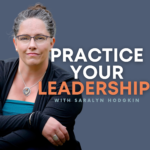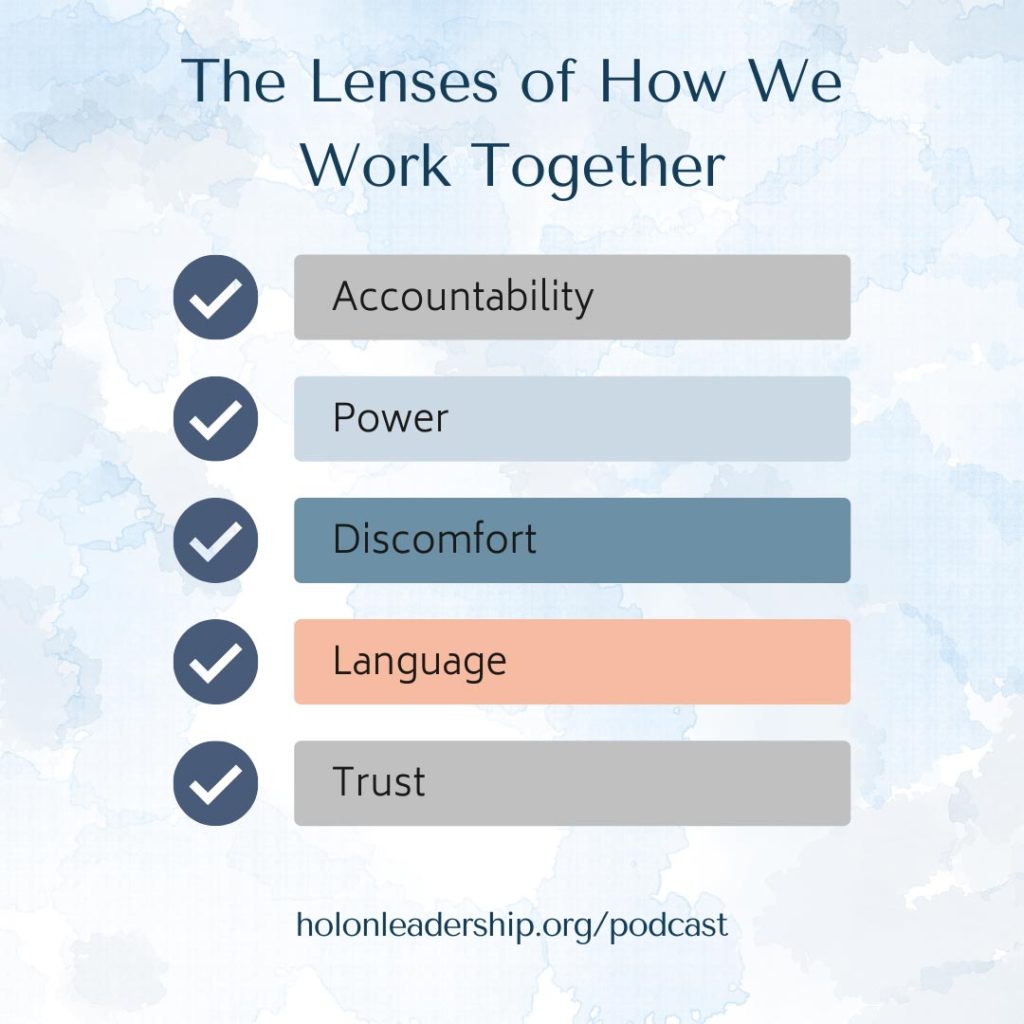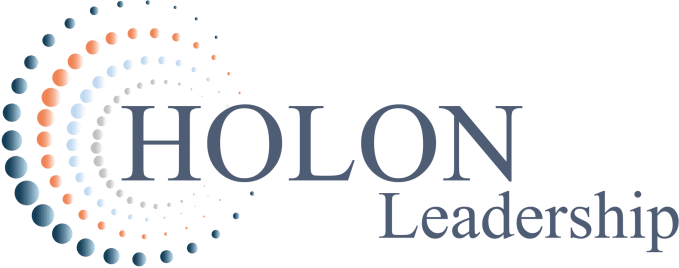Hi everyone, I’m Saralyn Hodgkin. And this is the podcast to practice your leadership.
Teams learning out loud, a key lever in being a high performing effective team, right? To try and do the work that you’re formed for. And part of the work, the inner work of teams, is to talk about how you all work together. How do we work together? In looking at just this part of a conversation, I’m asked a lot by teams like, what is that work? Great, say it, but what is that work?
And I find it a useful approach to create, I mean, bring resources to the table to create the rhythms and processes in the spaces to literally ask this question, how do we work together? I know what our intentions are, maybe we have some kind of manifesto for our team, but how does it actually come out? And creating the space to have that conversation, it can be really helpful to use different lenses into that question, right?
Okay. How do we work together? Well, let’s look at that from an accountability lens. How do we work together in ways that hold the team and the individuals in the team accountable? How are we holding the tension of empowerment and accountability? You may have heard this, I did a podcast with a gentleman named Tyler Colbourne and he talked about this right, is holding this tension of empowerment and accountability, empowering team members. And letting that expectation go, knowing that you’ll be accountable to what you know, you gotta be doing, right? How do we hold that tension there? Or from this accountability lens?
What does accountability even look like in practice on our team? Do we talk about it? Is it sort of a hidden elephant in the in the corner of the room that everybody talks about around the watercooler and says, oh my gosh, they didn’t get their stuff done? Or do we put it on the table and say, what does accountability look like? What is the language that we use together to hold ourselves in places of accountability? And hold one another in accountability? And what are the structures of the frameworks we bring in, in order to make it clear across the team, who’s accountable for what? So that we have clarity in just like using a raci model or something like that, right? Who’s accountable in this piece of work? Who’s responsible? Who needs to be informed and who just needs to be consulted? Right? RACI models?
All of that to say is that there are different frameworks and places where you can bring accountability to the table to get shared accountability. Number two, another lens. Power. Isn’t that everywhere? Holy. How is power showing up in our team? How is it not showing up in our team? What are the power dynamics that people feel, the team feels? How is power used and not used on our team?
Discomfort. What a great one to have after power, hey? Because, man, when you start talking about power, a lot of people start getting uncomfortable. And so how does discomfort show up in our team? How is it tended to? How is it invited in? What are our behaviors, our patterns? Do we avoid discomfort? Do we have behaviors to be able to dwell and sit with discomfort? Are there norms to invite uncomfortable conversations in or norms to keep them out? And what voices hold that discomfort? What voices are invited to disrupt? When? Under what conditions?
And from that place of discomfort there’s a tension with celebration. Sometimes it’s even uncomfortable to celebrate. It’s not always in the dark and dirties right, sometimes it’s in the joys and celebration, it’s too uncomfortable to celebrate. How does that show up in our team.
Another lens. Trust. More specifically, the behaviors of trust. Brene Brown talks a lot about this. How do we operationalize the behaviors of trust? She provides this braving anatomy, a braving inventory, we’ll attach it to the resources section for this podcast. How do we operationalize this anatomy of trust? What does that look like for us? A, as a team, and B as individuals. If B stands for boundaries, what do boundaries look like in me and my self leadership? And what do boundaries look like for our team? Where do we say no to others?
Lastly, language. A lens, or maybe even more of a tool this might be, not sure, you decide. But another key thing about, in the conversation of how we work together, is what is our common language? What is our language to hold uncomfortable or vulnerable conversations? Again, Brene Brown brings in this idea of rumble language. We’ll include that in the resources. One of my favorite prompts. And that is, you know, hey, the story I’m making up here is that you blinked twice, turned your head to the side and you hate me.
Oh my gosh, the story I’m making up. How crazy? I know, doesn’t that sound just like, come on Saralyn? And all of us do something like that all the time. I referenced here the ladder of inference. I learned this from Peter Senge, from Senge’s work, I can add this into the resource section as well. But the idea is how do we climb this ladder of an action that takes place that we then climb the ladder to a place of a belief, and a story we’re telling ourselves, which then we create as a truth out in the world, right? Like we climb this ladder, where we infer, where we infer somebody else’s stories, what somebody else is thinking.
And then for me anyways, I then attach that to myself going, wow, maybe I’m not good enough. Maybe I shouldn’t be here. What am I thinking, right? And as some of that narrative comes up, so hold on, what can language with the ladder of inference and with rumble language, what kind of common language can our team create? So we don’t fall into the pits of the dangers of inference. So we can hold those rumbling uncomfortable conversations.
And we can see language prompts, language prompts that are common amongst our team to signal my team members trying to say something a little bit vulnerable. I’m going to hold space for that. How do I need to be to hold space for that person. So all of that to say is how we work together is a practice, is a journey. It takes intentionality, resources, space, rhythms, processes. And these lenses can help us have a centered conversation, a continual centered conversation of how we work together, and all, that helps with the inner work of teams. Do your own work as a team, all.
Thanks all, I’m Saralyn. You can find me at holonleadership.org. I walk alongside you as you practice your leadership.



 Apple Podcasts
Apple Podcasts Spotify
Spotify Google Podcasts
Google Podcasts